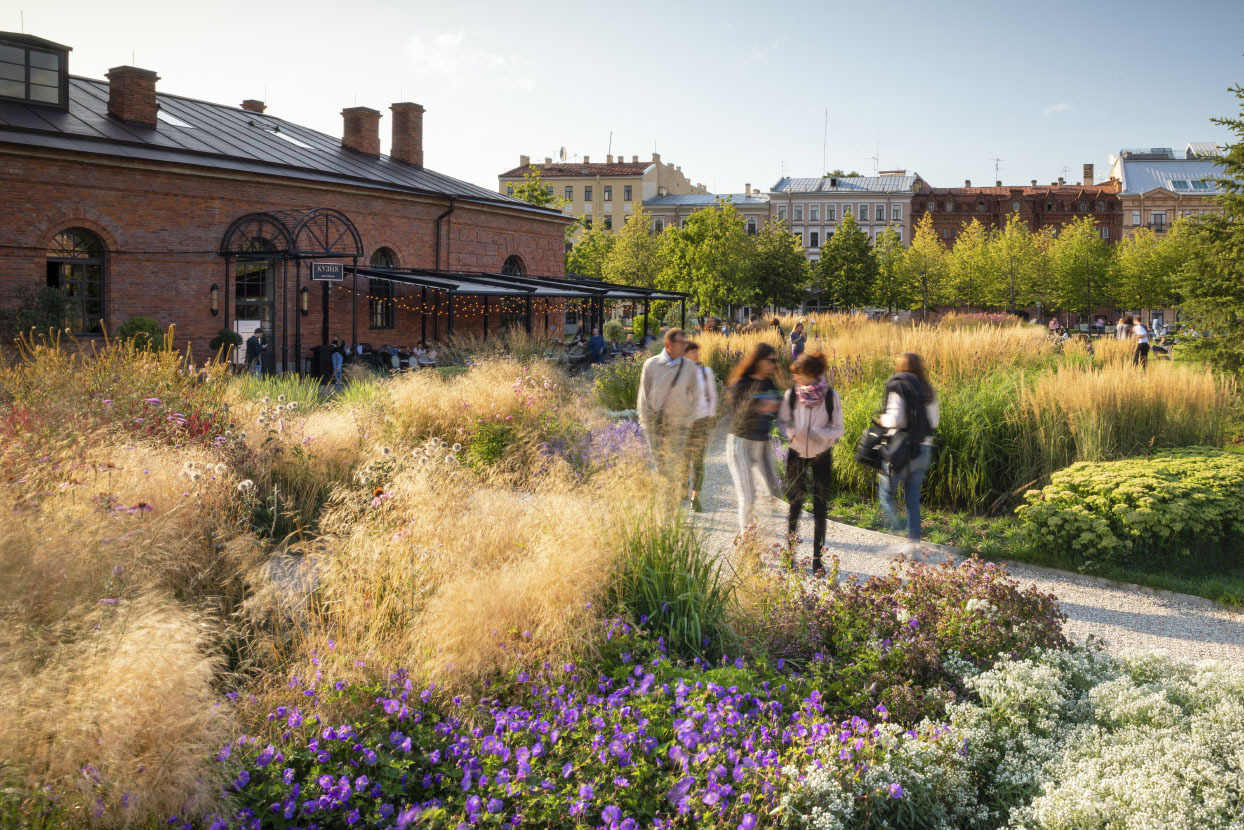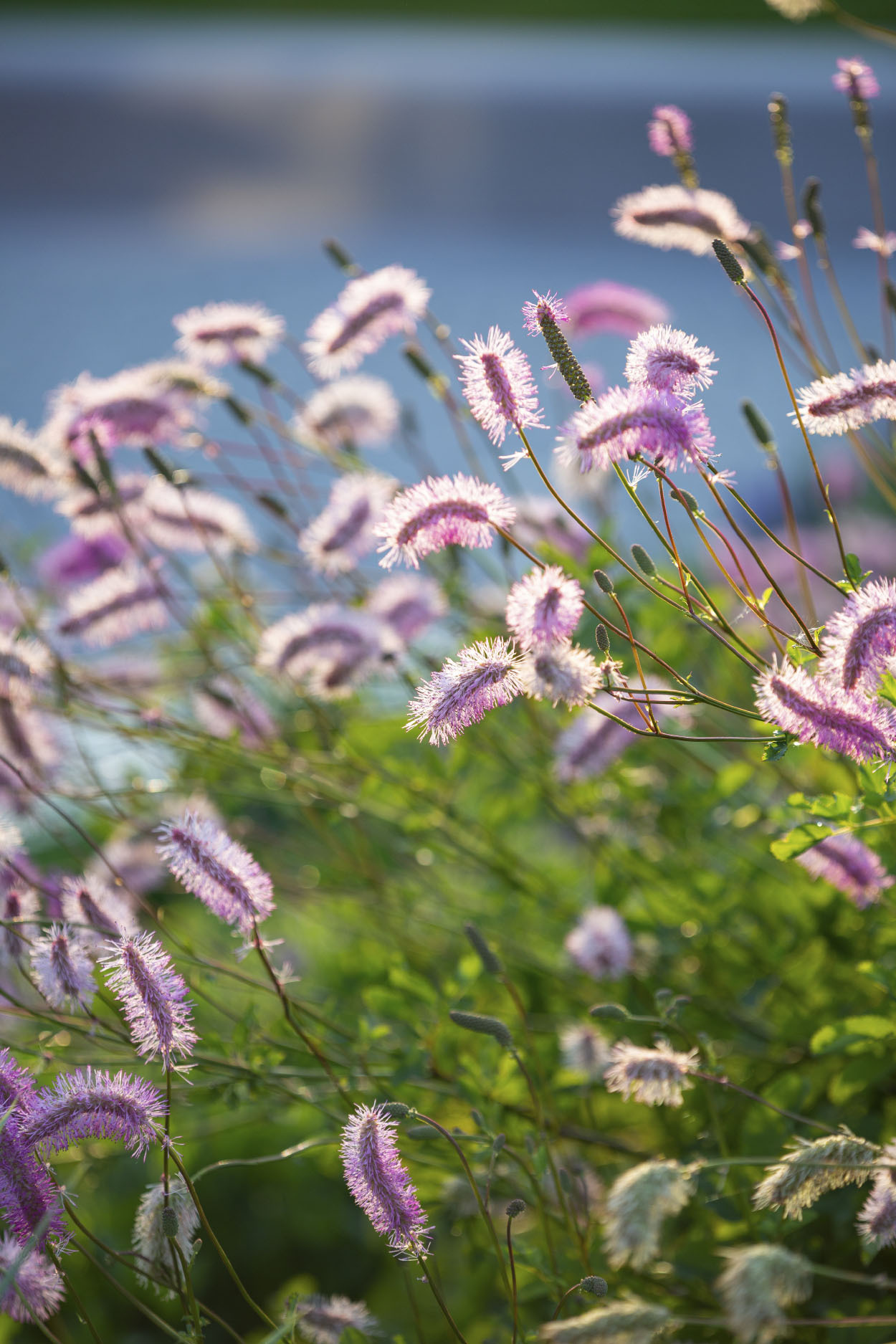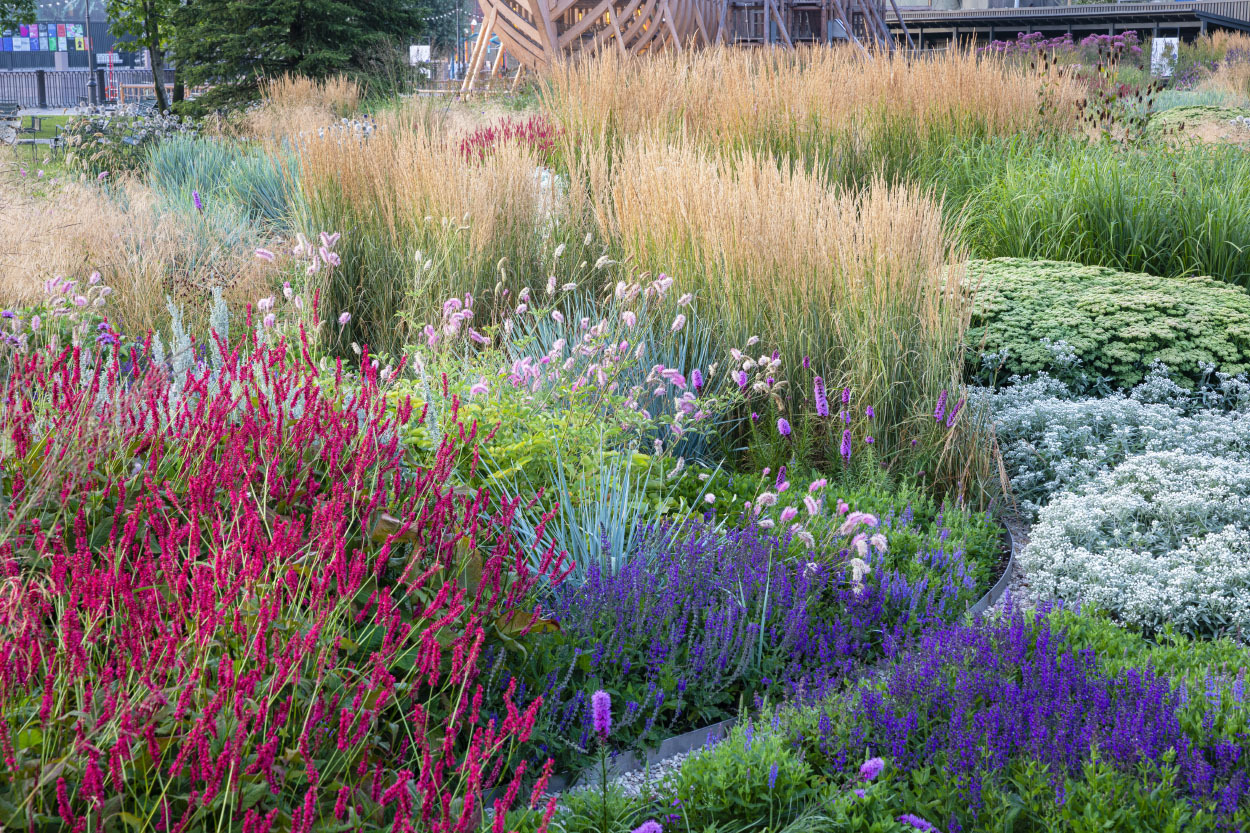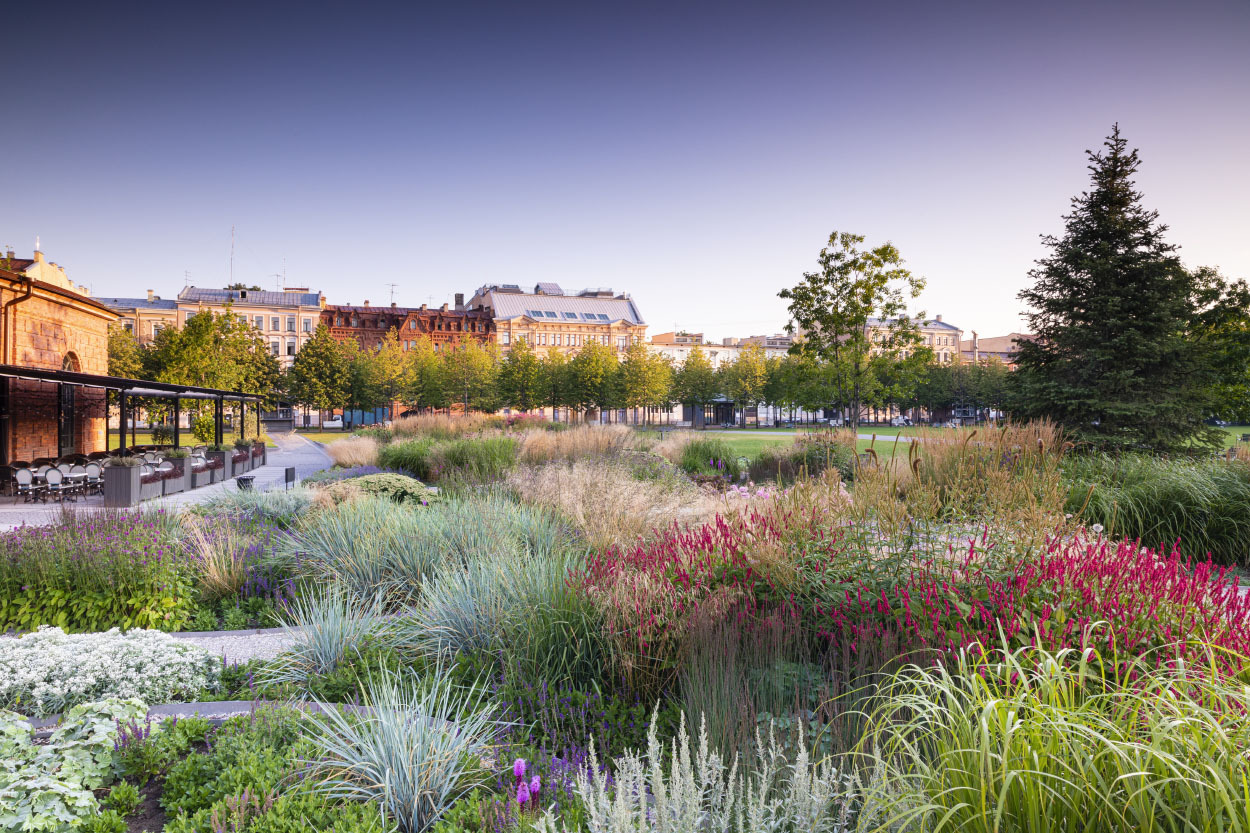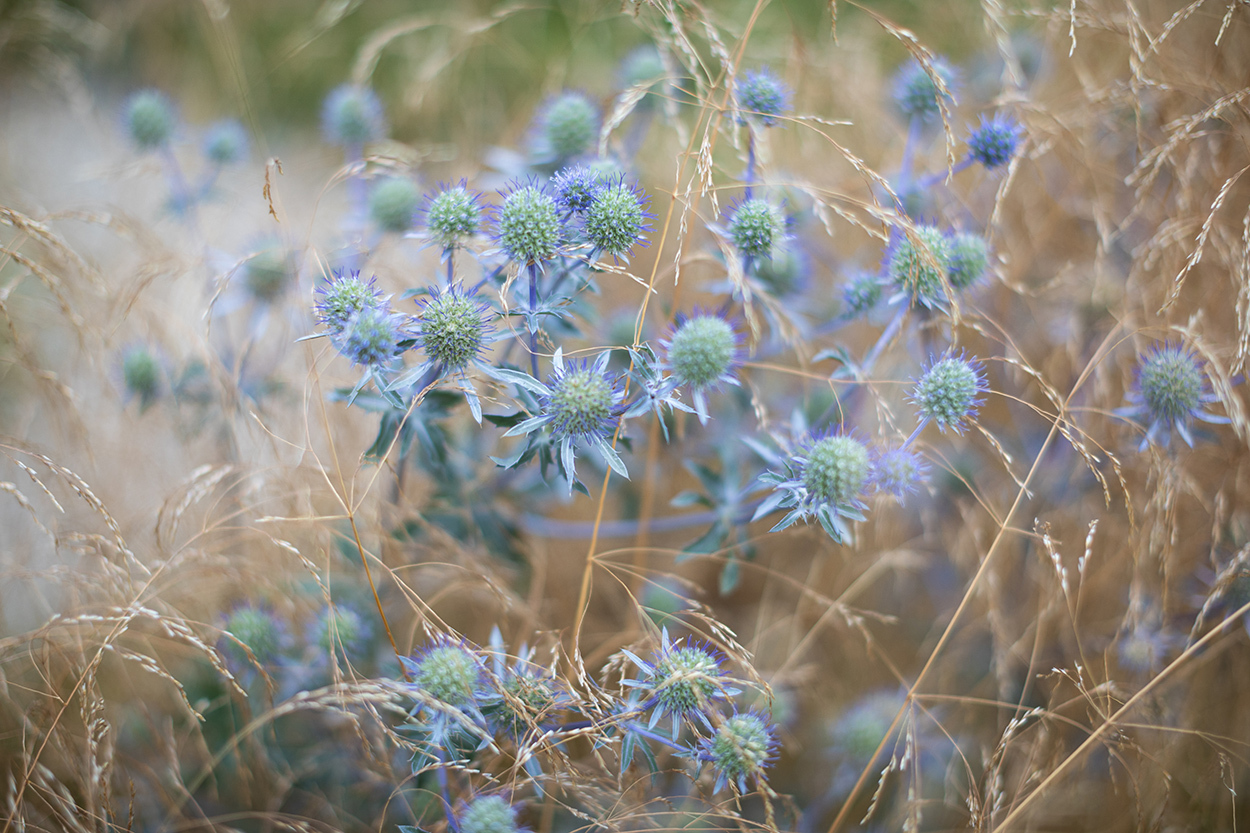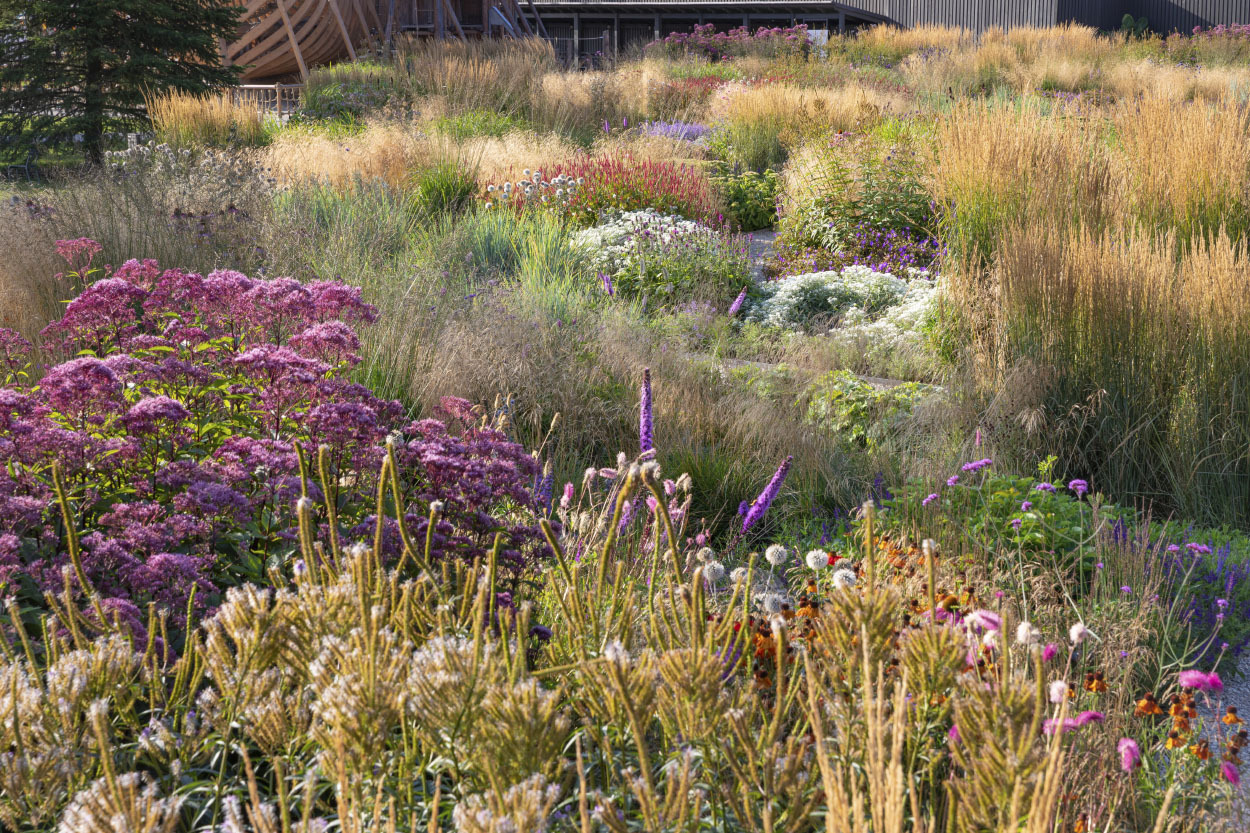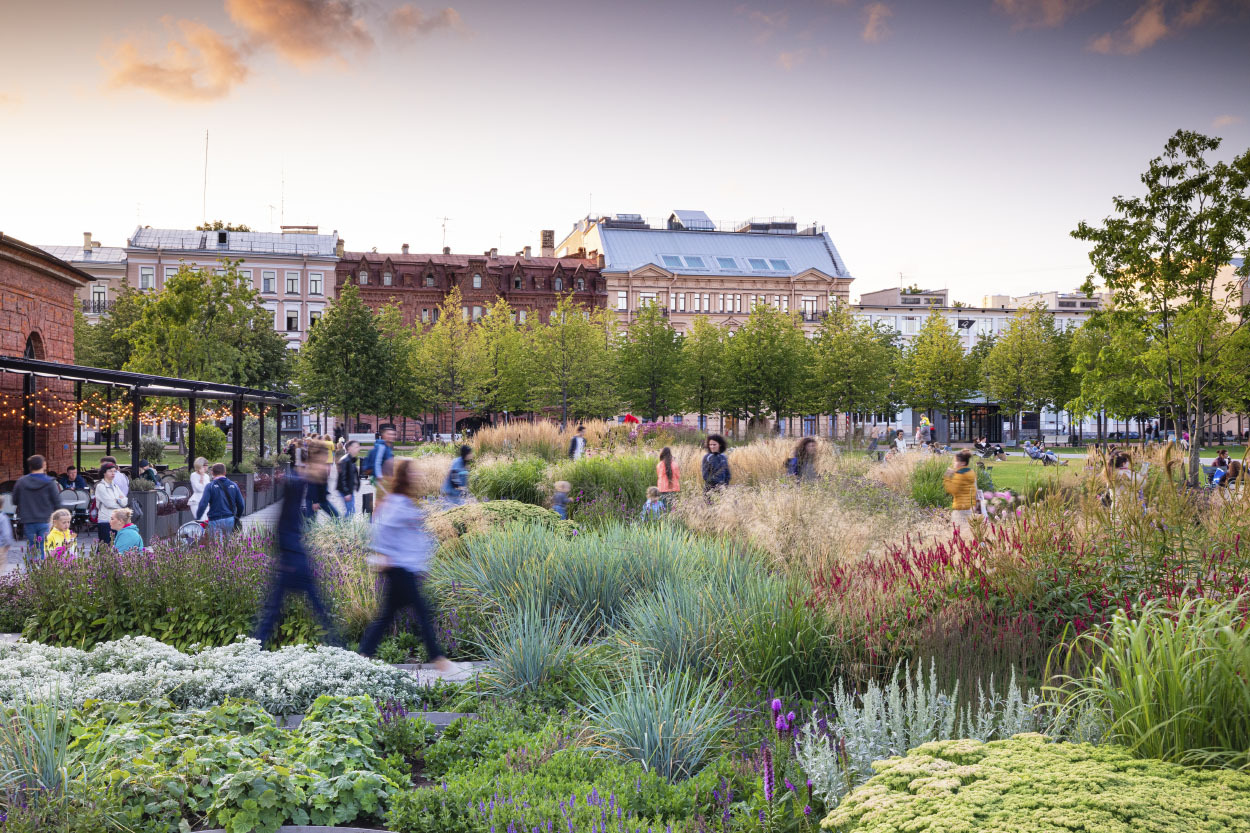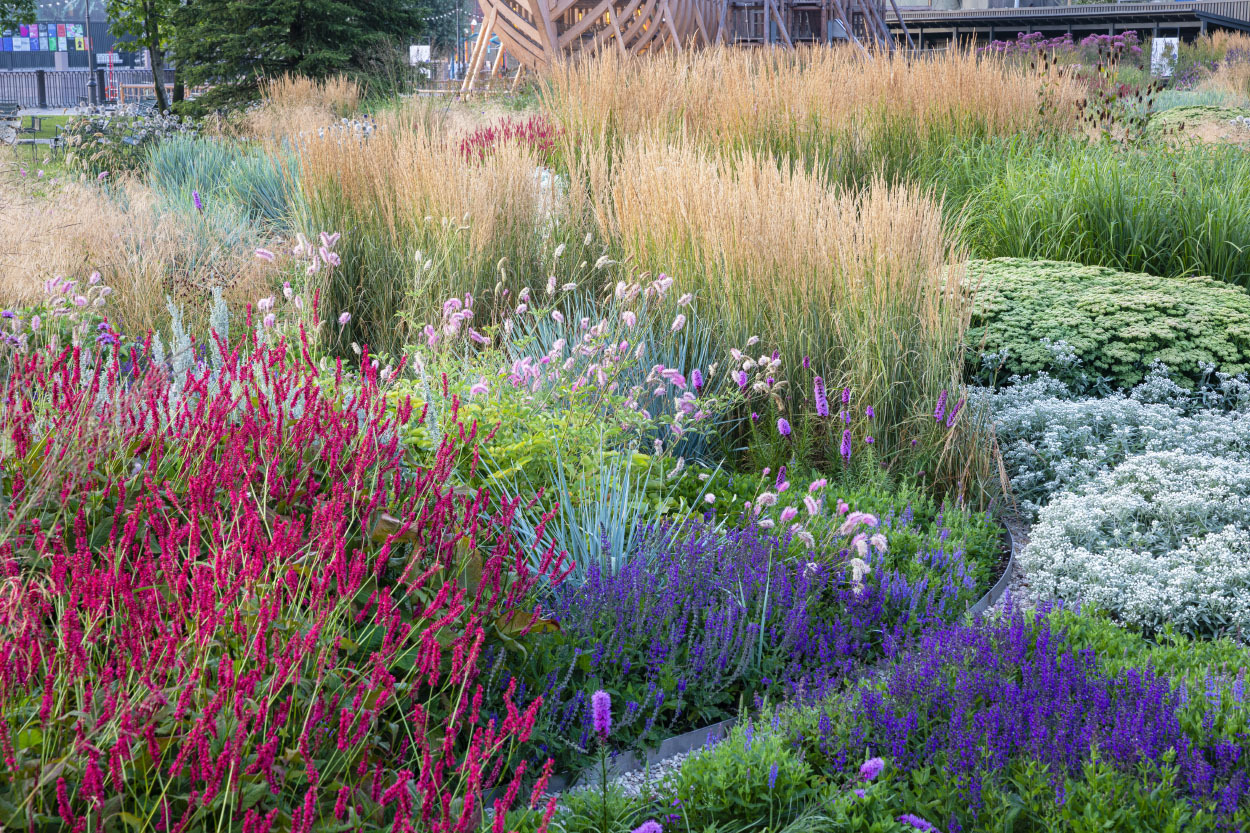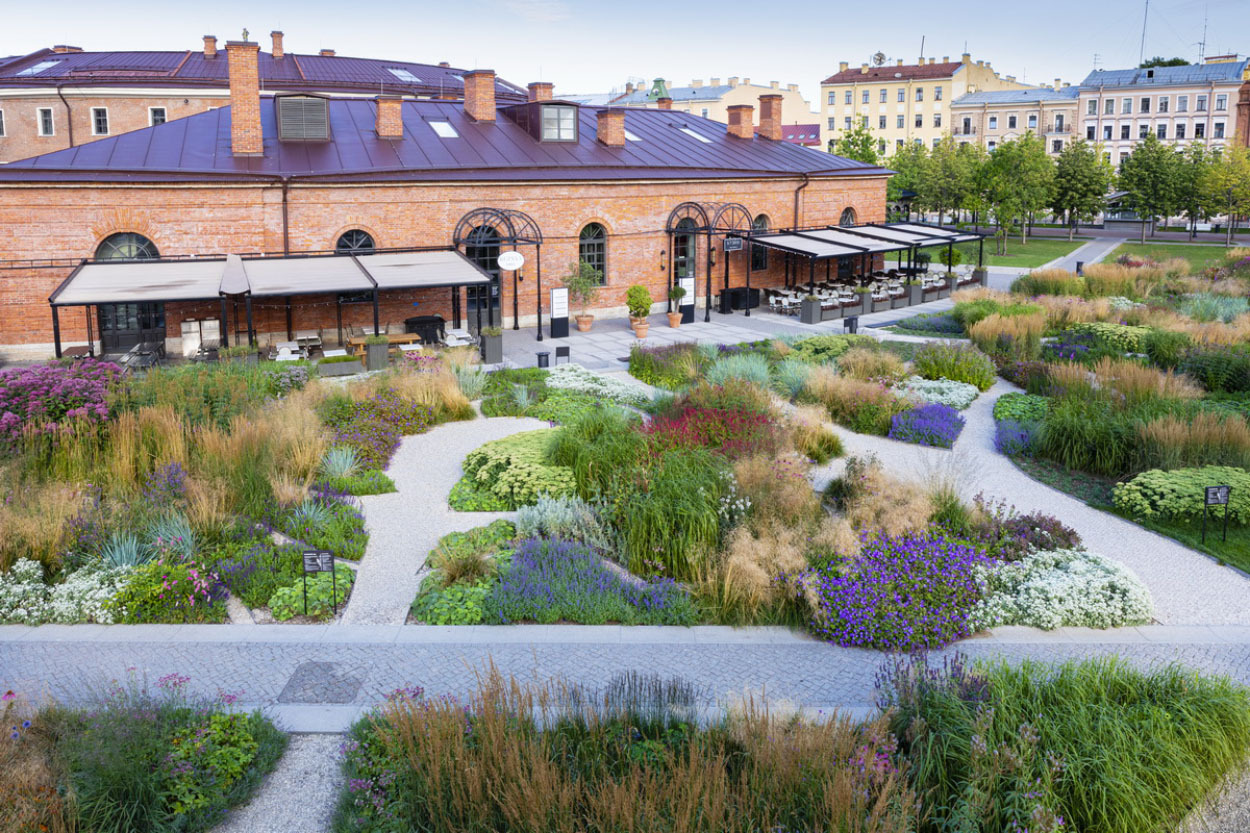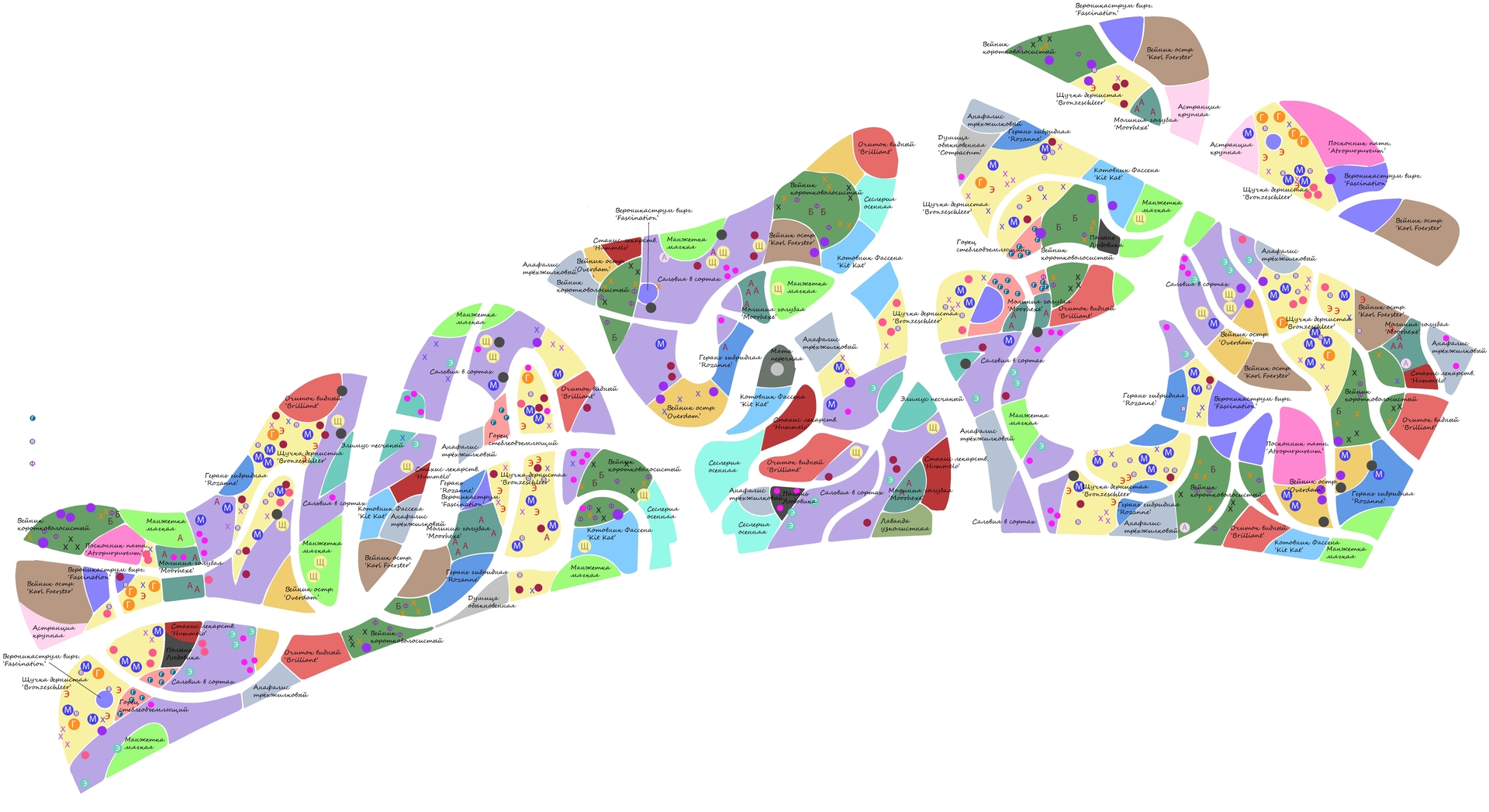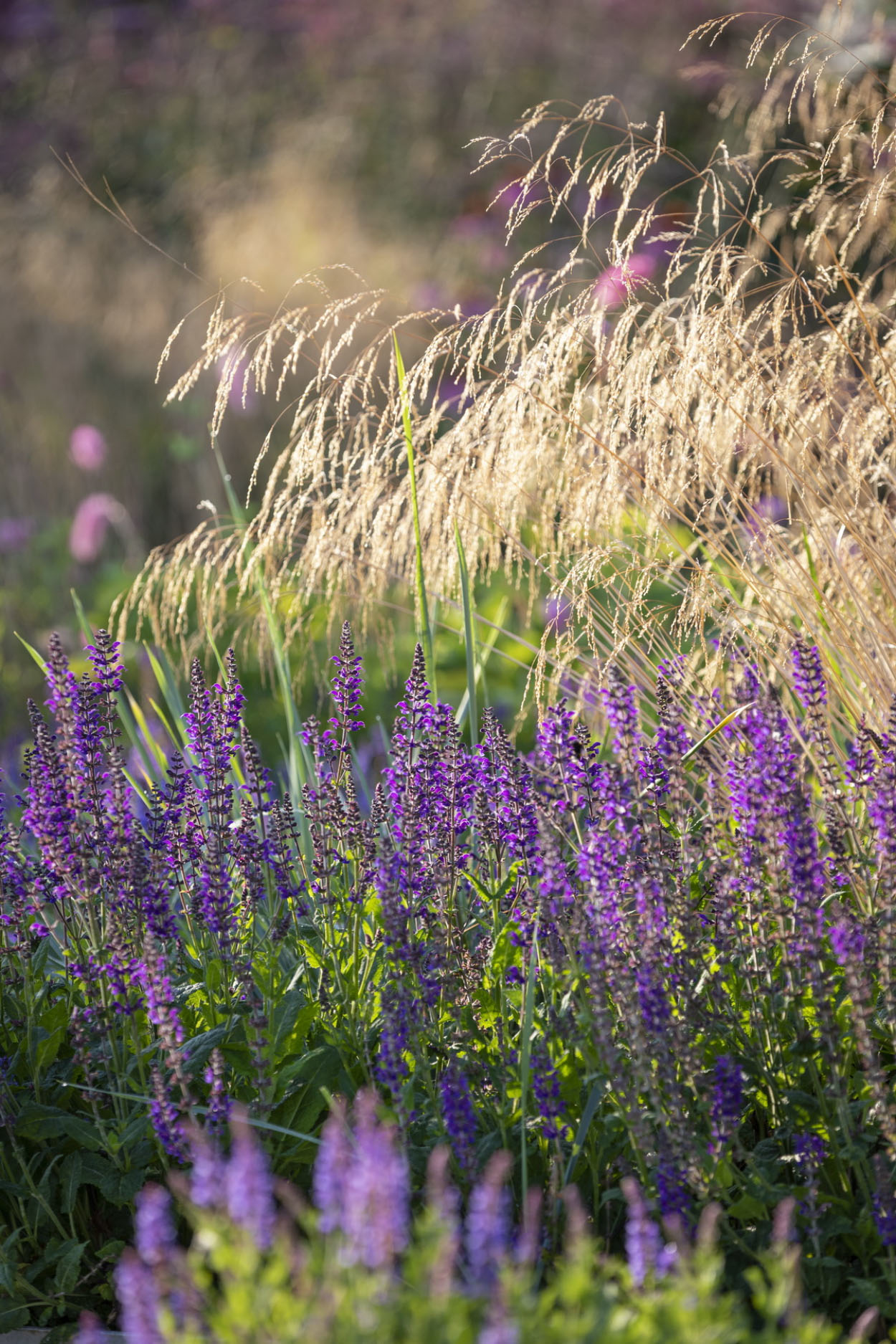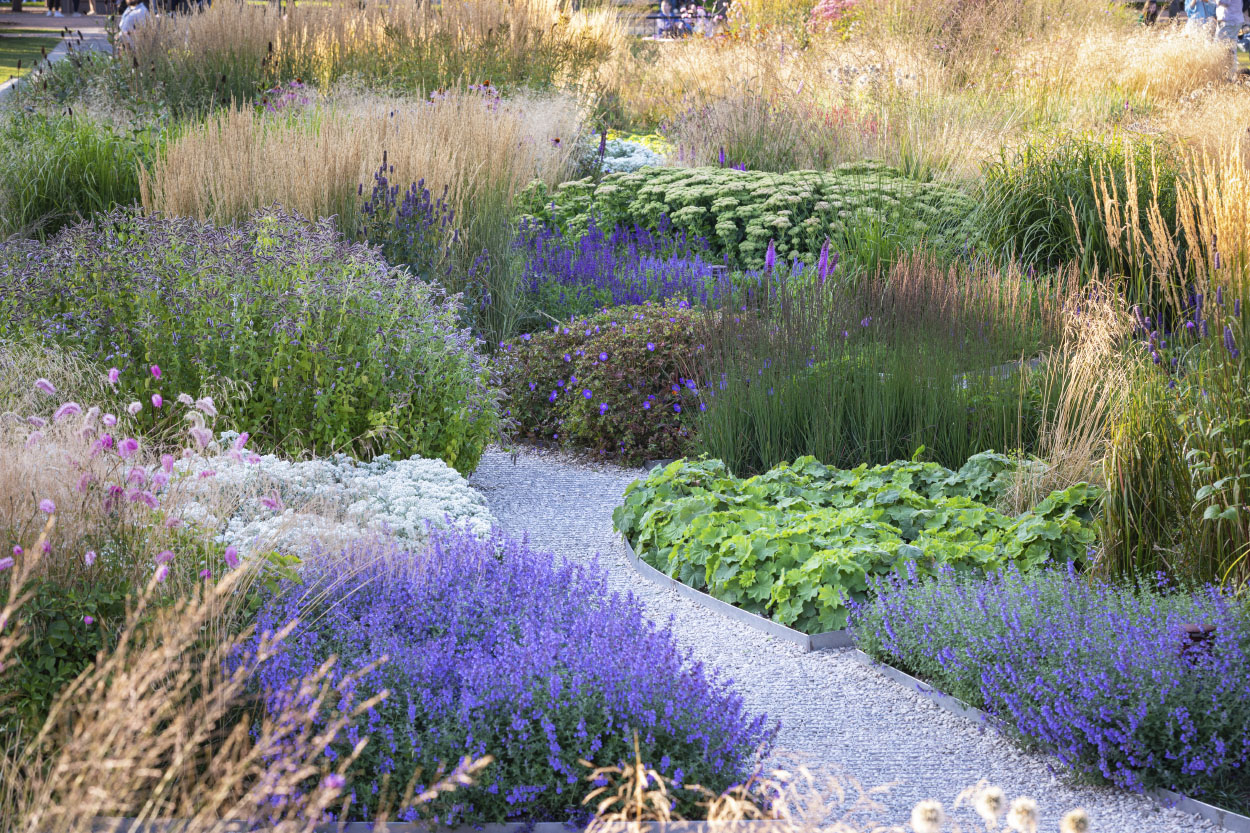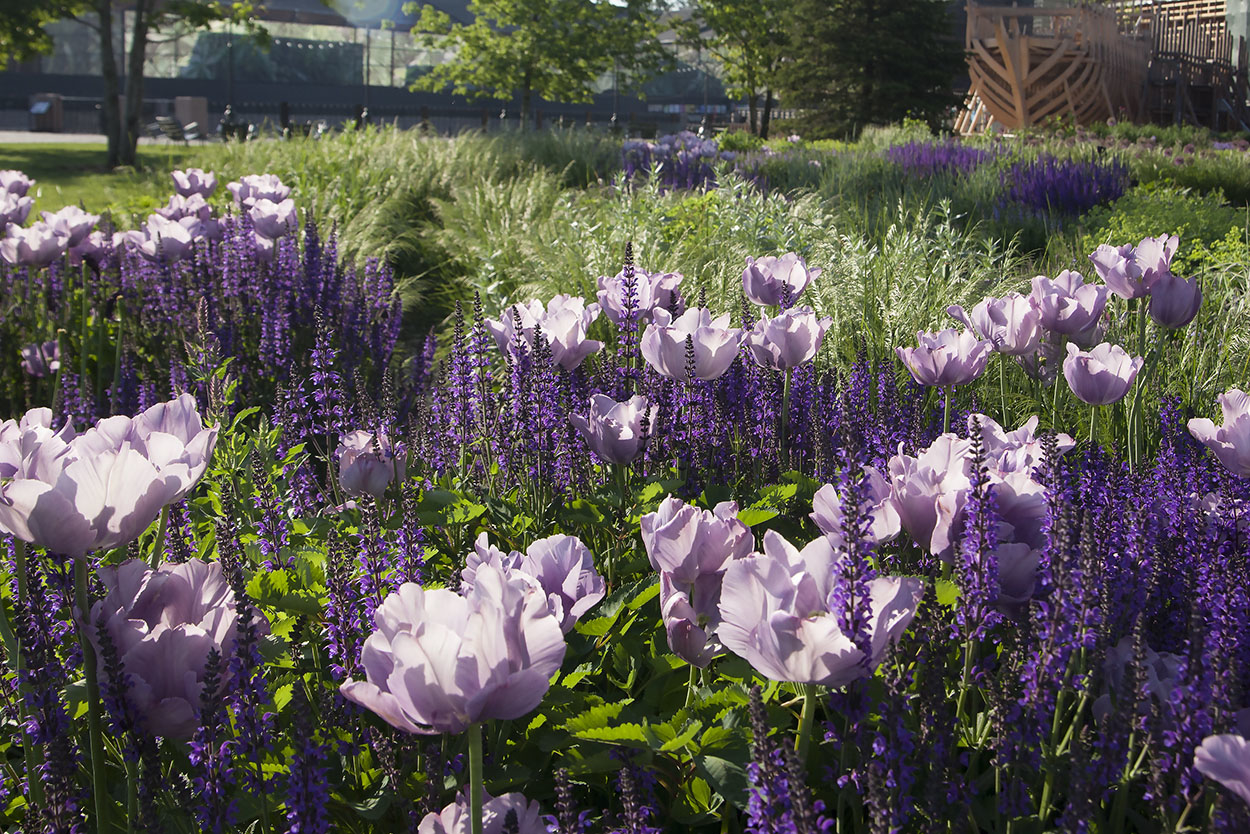The majority of the garden (by area and volume) is occupied by grasses ranging from 50 cm to 2 m in height.
The taller grasses are visible from a distance and used as focal points while the shorter grasses are planted in the centre and along the paths.
The design is dominated by tufted hairgrass, also known as tussock grass, which is planted in large clumps and grows in voluminous round tufts. In the month of June, clouds of tasselled heads emerge which remain impressive through to autumn.
